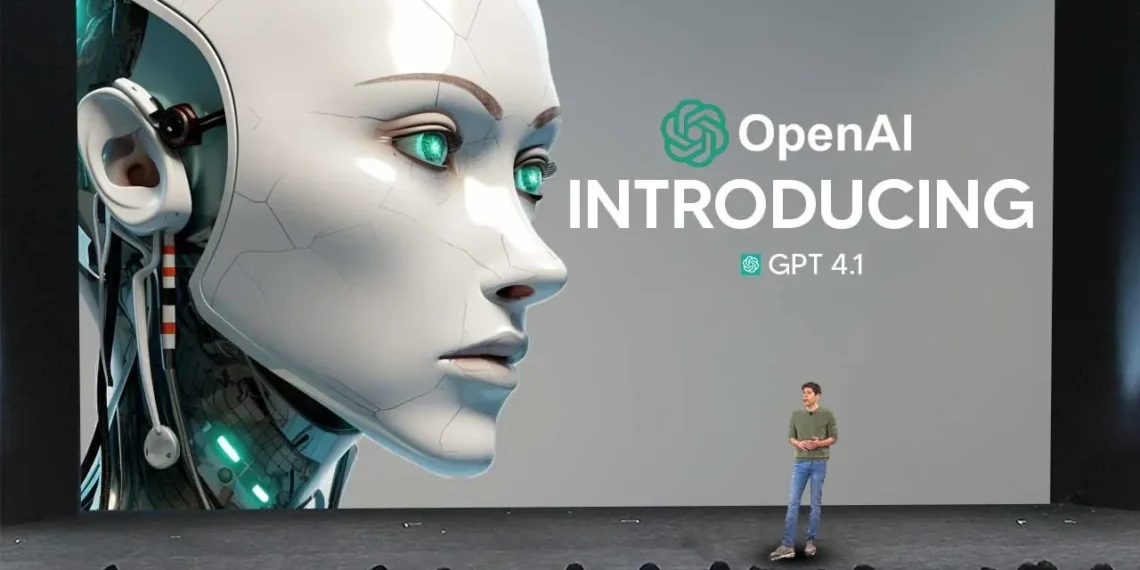Overview
The introduction of GPT-4.1 and GPT-4.1 mini has marked a significant update in artificial intelligence capabilities within ChatGPT. These models are available to users with paid ChatGPT accounts, such as ChatGPT Plus, Pro, and Team, offering improved functionality for a range of applications. While free-tier users currently do not have access, Enterprise and Education accounts are expected to incorporate these models in the coming weeks.
Key Features
- Enhanced Performance: GPT-4.1 demonstrates notable improvements in efficiency and accuracy compared to its predecessors, GPT-4o and GPT-4o mini. It excels in coding tasks, making it valuable for software engineers and developers.
- Larger Context Windows: The context token limit has expanded to one million tokens, allowing models to process significantly larger prompts, benefiting functionality such as long-context comprehension.
- Optimized for Coding: These new models are tailored for technical work, streamlining programming and debugging tasks.
Model Options

| Model | Description | Target Users |
|---|---|---|
| GPT-4.1 | High-performance with advanced capabilities | Paid ChatGPT users |
| GPT-4.1 Mini | A balanced option for all user levels | Default for free and paid tiers |
| GPT-4.1 Nano | Smaller, faster, focused on affordability | Awaiting broader availability |
These models represent OpenAI’s efforts to enhance both accessibility and functionality. GPT-4.1 mini is replacing the earlier GPT-4o mini as a standard model, making it more inclusive for free-tier users while maintaining efficiency.
OpenAI’s continued dedication to safety and transparency is reflected in these updates. The models undergo rigorous evaluations to maintain reliability and smooth conversational flow, which is critical for tasks ranging from technical support to AI research projects. By offering lower-cost and high-speed options, OpenAI aims to meet diverse user needs effectively.
Frequently Asked Questions
Differences Between GPT-4 and Earlier Models

GPT-4 introduces advancements in understanding user instructions, processing longer text inputs, and generating more accurate outputs. Compared to previous versions, it has improved capabilities in tasks such as coding and conversational interfaces. Models like GPT-4.1 and GPT-4o bring further refinements in various AI applications.
Cost Options for Integrating GPT-4
Pricing plans for GPT-4 integration cater to diverse needs, offering flexible options for developers. Subscription-based tiers typically have varying limits based on usage or features. Businesses can contact OpenAI or cloud partners like Azure OpenAI Service to inquire about pricing structures tailored to their applications.
Availability of Task-Specific Pre-Trained Models
OpenAI provides versatile models that can adapt across numerous domains. While GPT-4 models are generally pre-configured for broad tasks, developers may customize them further based on individual requirements using APIs. Models optimized for specific contexts like coding or content generation may also be available through tools such as Azure OpenAI Service.

Enhanced Language Understanding and Processing Features
ChatGPT, powered by GPT-4, showcases significant improvements in language comprehension and output generation. Enhancements include better contextual retention over longer conversations, fewer errors, and suitability for complex queries or user-driven dialog formats, as highlighted in updates like GPT-4o.
Developer Access to OpenAI GPT-4 API
Developers can access GPT-4 through the OpenAI API to integrate its functionalities in applications. Cloud services like Azure also support developer tools for managing projects built on GPT-4. Comprehensive guides and documentation ensure seamless integration and usage.
Ethical Considerations and Limitations in Content Creation
While GPT-4 excels in generating human-like text, users must remain cautious of biases, inaccuracies, and misuse of AI-driven content creation. Ethical considerations include avoiding harmful or misleading outputs and respecting copyright laws during implementation. Developers should follow best practices outlined in OpenAI’s policies to tackle such challenges responsibly.






































Comments 1